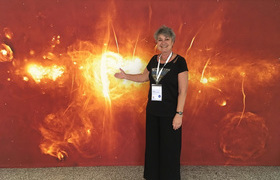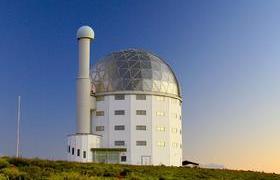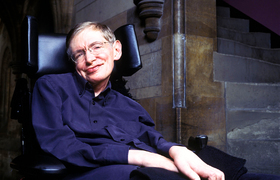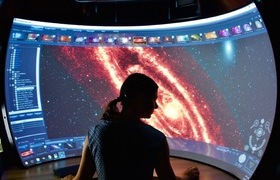UCT alumnus, technology, part of black hole ‘discovery’
12 April 2019 | Story Helen Swingler. Photo Event Horizon Telescope. Read time 5 min.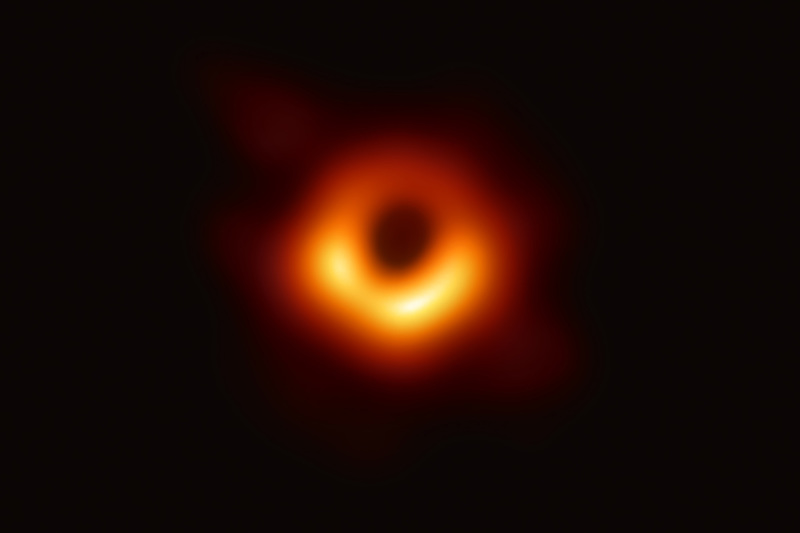
University of Cape Town (UCT) alumnus and South African astrophysicist Roger Deane is part of an international team of scientists that captured the first image of a black hole, released to the world on 10 April. Remote sensing technology developed at UCT also played a role in the historic discovery.
Deane is a member of the team on the Event Horizon Telescope, which captured the image.
The supermassive black hole, Messier 87 in the Virgo Galaxy, is 55 million light years from Earth and has a mass 6.5 billion times that of the Sun. Scientists have long known that black holes exist (neither light nor data escapes from a black hole), at least in theory.
The discovery is an important step towards confirming Albert Einstein’s theory of relativity.
The image showed the edges of the black hole, or “event horizon”, for the first time. Scientists estimate that the event horizon is about the breadth of our solar system.
According to reports, the black hole is also active, converting nearby gas and matter into energy 100 times more efficiently than the nuclear fusion that powers the stars.
“It took a large-scale international cooperation between 20 countries and 200 scientists at a cost of millions of US dollars.”
Space science programme
Deane completed his undergraduate degree at UCT and a master’s in astrophysics and space science at the National Astrophysics and Space Science Programme at UCT, supervised by Professor Renee Kraan-Korteweg. His thesis was awarded with distinction.
After completing his PhD at the University of Oxford, Deane returned to UCT for three years on a Square Kilometre Array (SKA) supported postdoc. He was later also a postdoc at Rhodes University and then a senior fellow there.
In 2018 he took up an associate professorship at the University of Pretoria (UP), where Kraan-Korteweg said Deane is not only continuing to do “great science, and great preparatory work for MeerKAT and the SKA, but foremost also to help start up an astronomy group there”.
She said he was already the lead author of a Nature paper during his first postdoc at UCT, titled: “A close-pair binary in a distant triple supermassive black hole system”.
According to a News24 report Deane and his team had the task of developing simulations from the “Earth-sized” telescope used to make the discovery.
“These simulations mimic the data coming from ... [the antennas] across the globe, mimicking the imagery to help scientists get a better picture of what they were looking at,” it said.
The discovery took a large-scale international cooperation between 20 countries and 200 scientists at a cost of millions of US dollars.
To “see the unseeable” and produce the image, the project harnessed eight radio telescopes on Antarctica, Greenland, South America, North America, Hawaii and Europe, all pointing their dishes at the black hole and creating a virtual giant parabolic dish. To take the pictures, the teams relied on good weather at all eight telescopes on the same days in April 2017.
The project took two years to complete because the data files from each telescope were so enormous they were too large to transfer digitally.
Technology key
Technology was key to the massive project.
According to Emeritus Professor Michael Inggs, of UCT’s Department of Electrical Engineering’s Radar Remote Sensing Group (RRSG), the black hole image was captured, at least partly, using SWARM, a 32GHz backend developed by Jonathon Weintroub and powered by ROACH2.
Weintroub completed his master’s degree in electrical engineering at UCT with Professor John Green, before moving to Harvard for PhD studies.
ROACH2 was a very successful and ongoing collaboration between the South African Radio Astronomy Observatory (SARAO), the National Radio Astronomy Observatory in the United States and the University of California Berkeley, Inggs explained.
“The development team of ROACH2 is dominated by a team of UCT graduates, set up at the Square Kilometre Array South Africa (now SARAO) by Dr Alan Langman, also an alumnus of UCT. Many of these alumni carried out master’s and PhD studies while working on the project.”
UCT RRSG’s Dr Daniel Czech is currently at Berkeley on a postdoctoral programme.
“The replacement for ROACH2 is SKARAB, now produced in industry by Peralex, a local company dominated by UCT electrical engineering graduates, including the founders, Per Olsen and Alex Bassios,” Inggs said.
 This work is licensed under a Creative Commons Attribution-NoDerivatives 4.0 International License.
This work is licensed under a Creative Commons Attribution-NoDerivatives 4.0 International License.
Please view the republishing articles page for more information.







